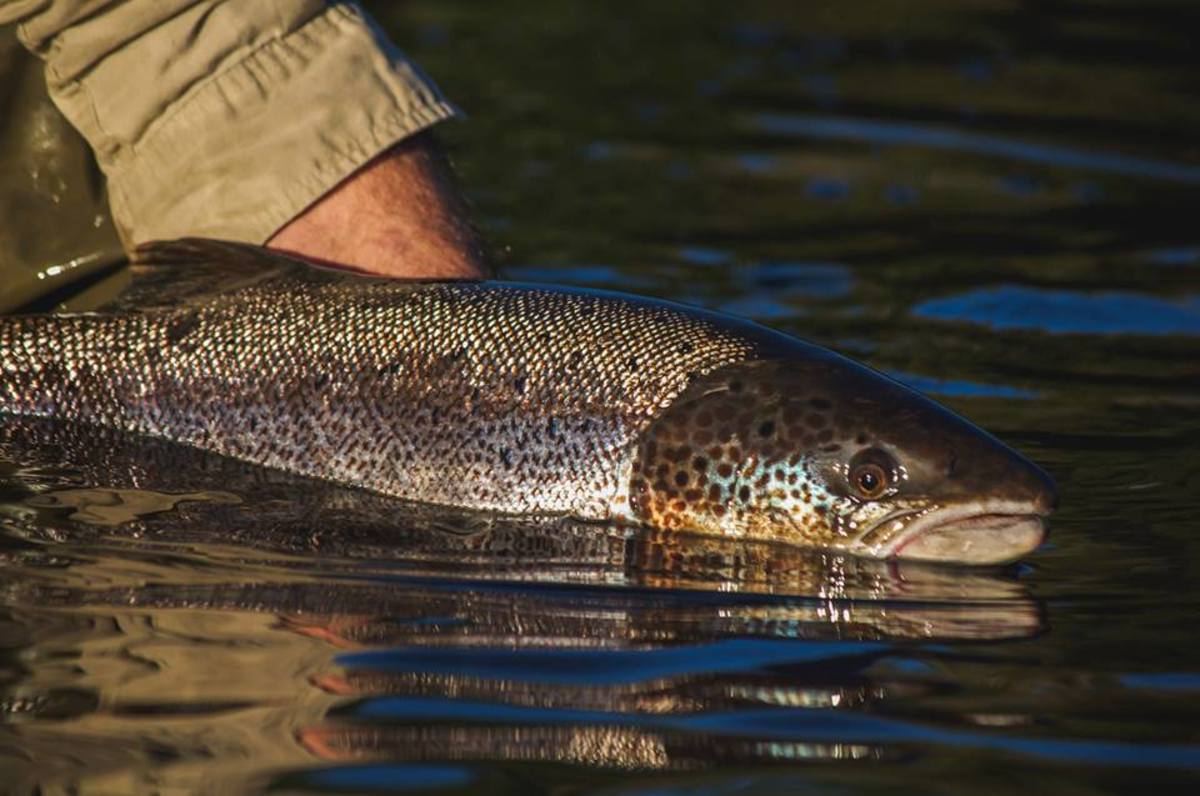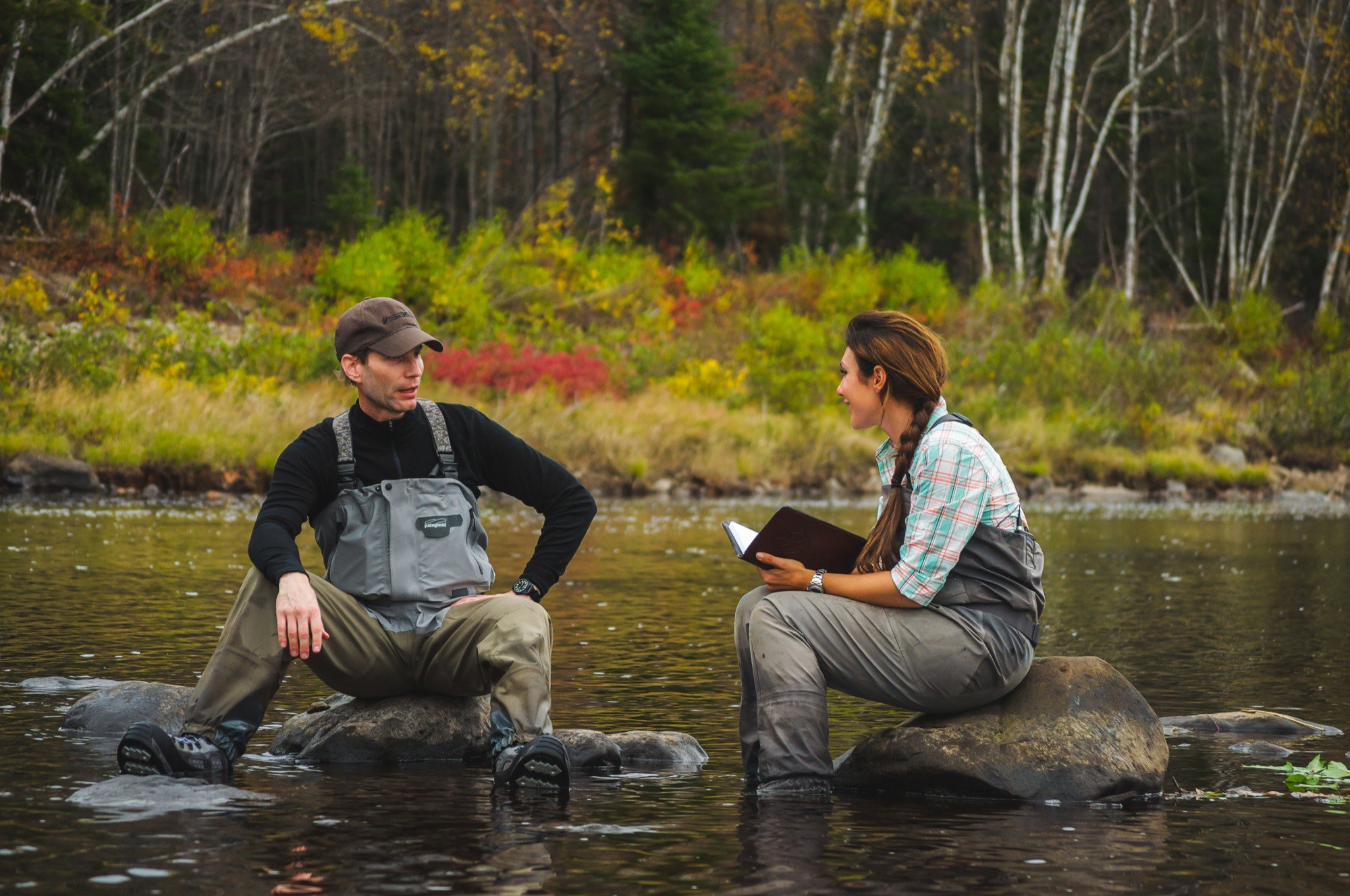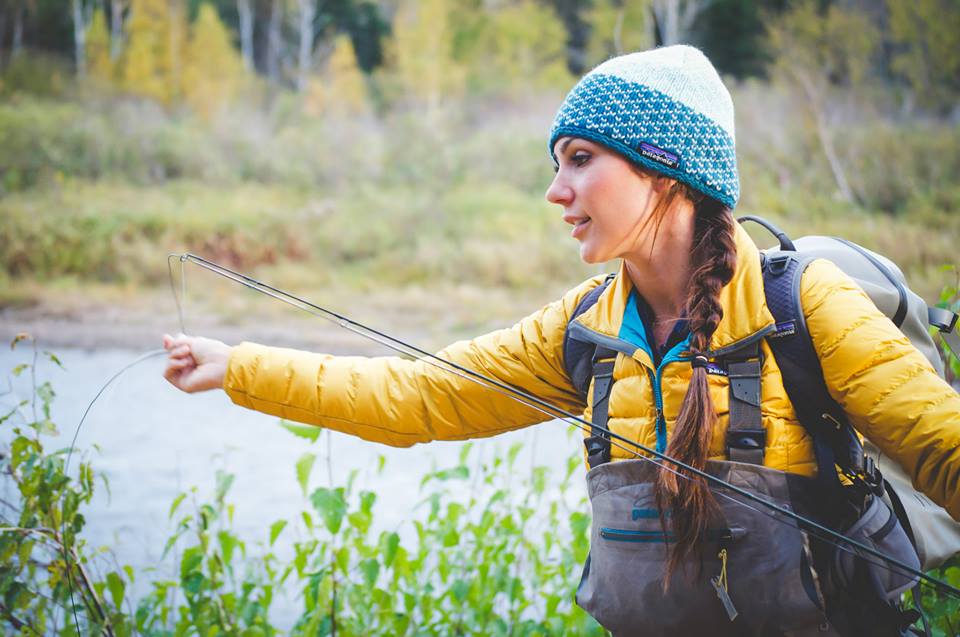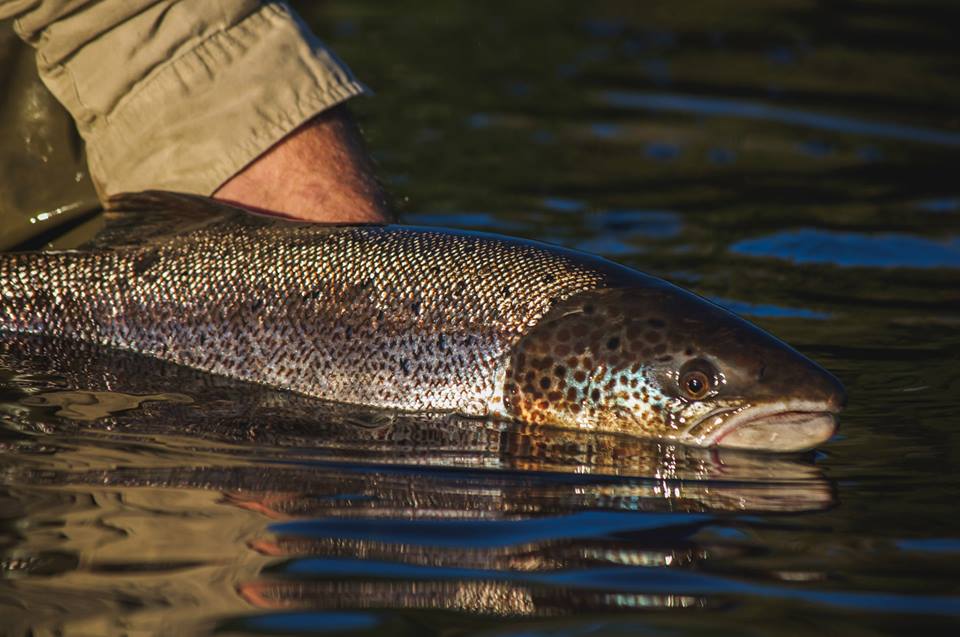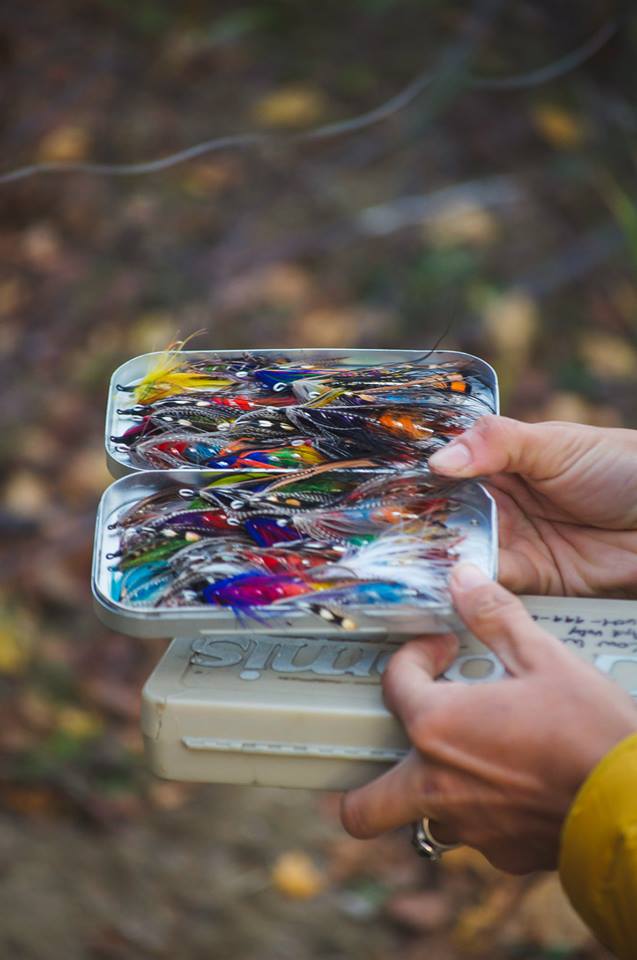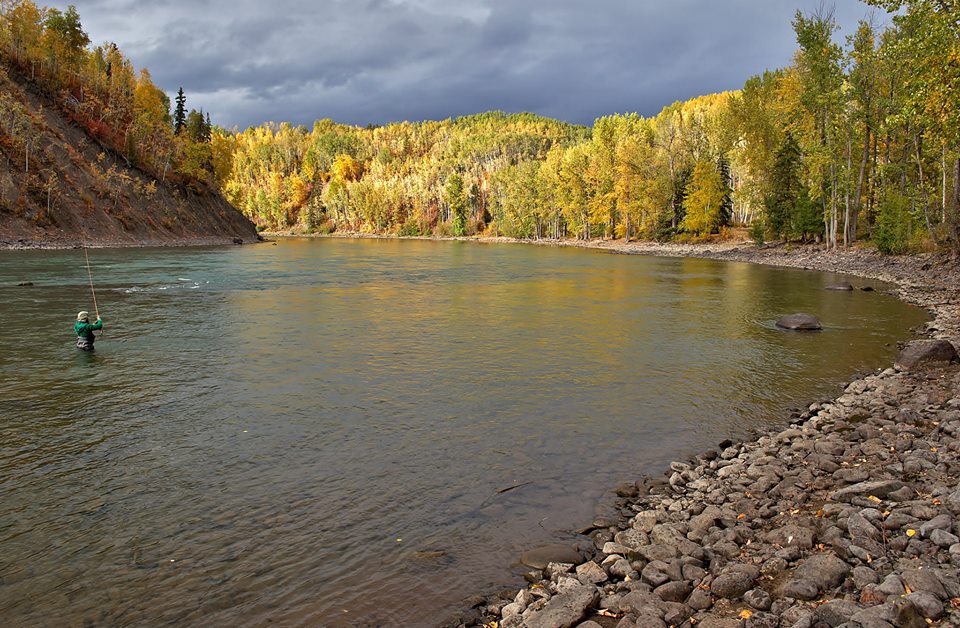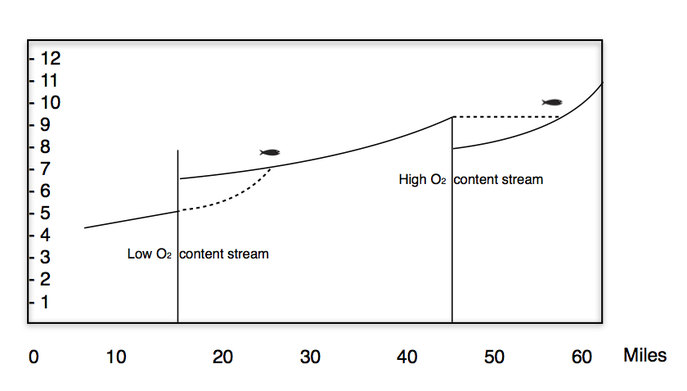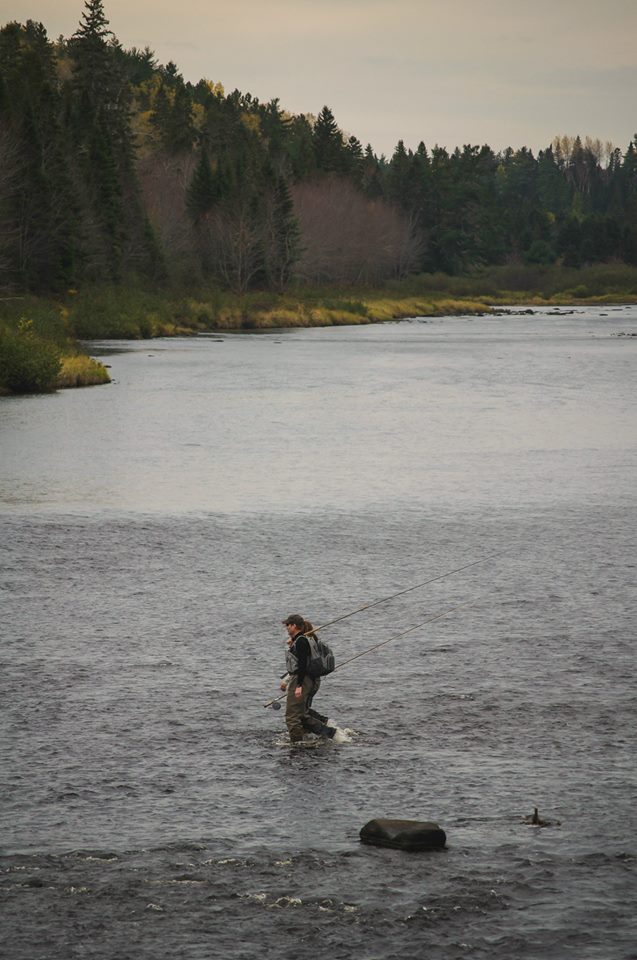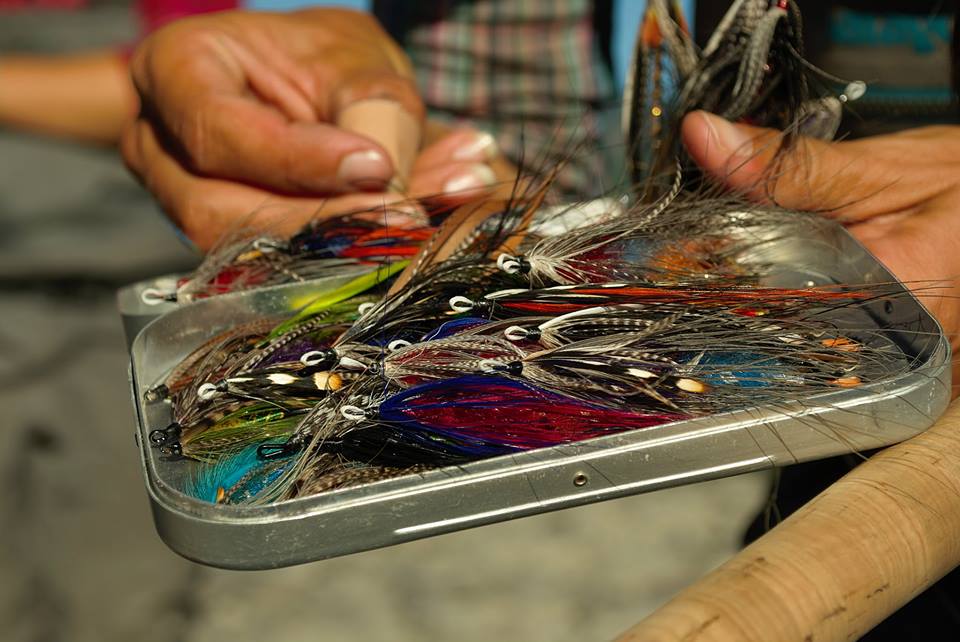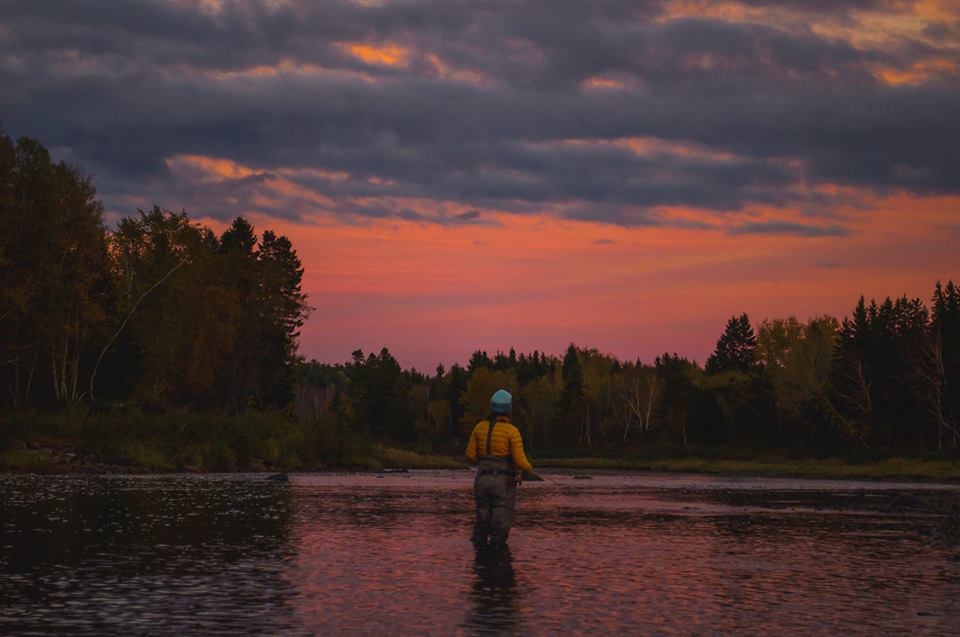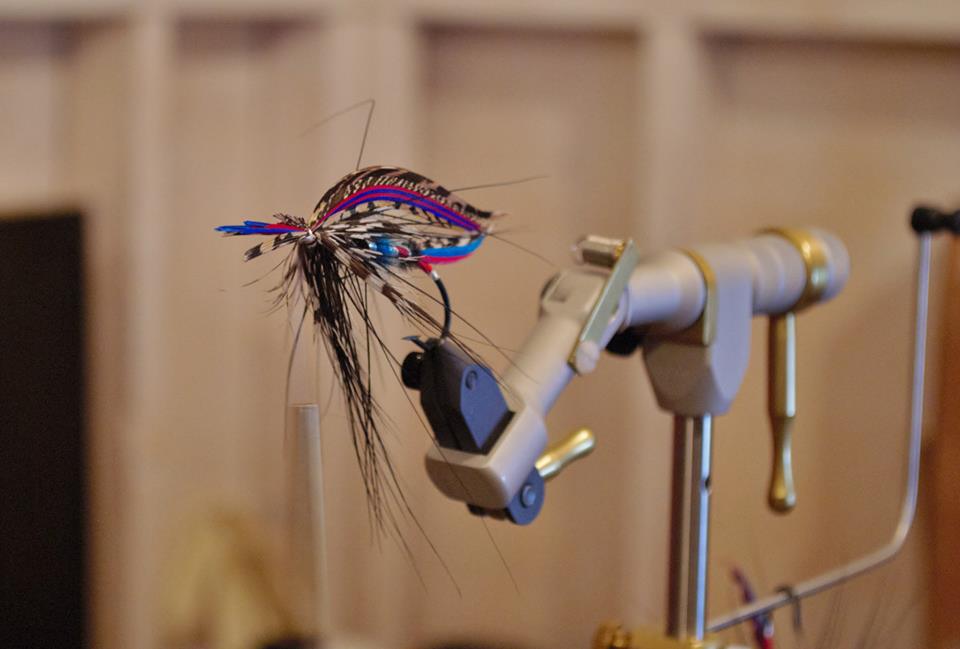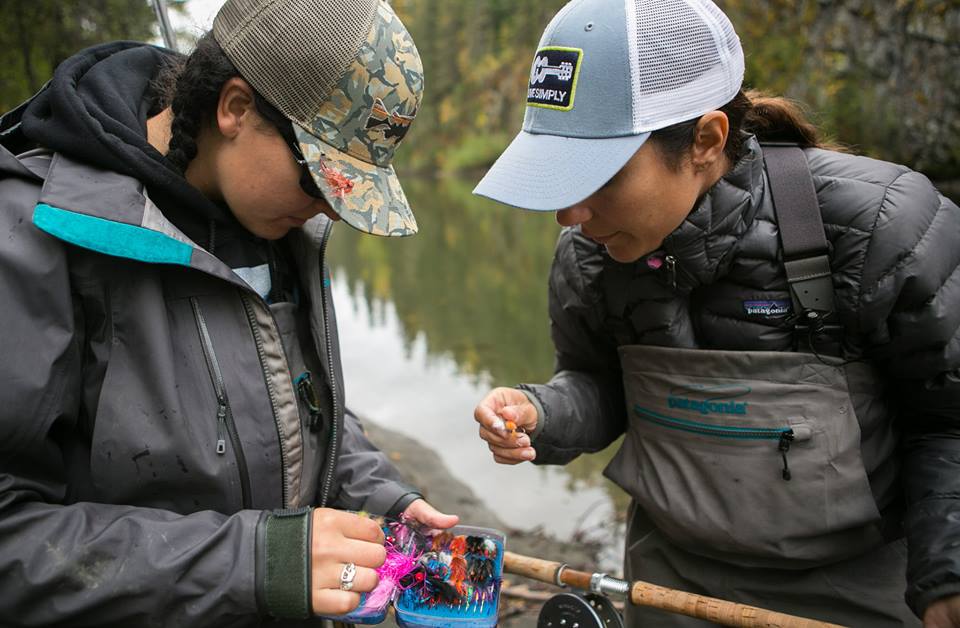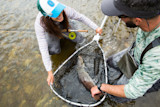Ask the average angler today who Richard Waddington was and you will likely get a vague shrug and mumble about overpriced hook shanks that have recently been replaced by cheaper, more accessible alternatives.
But Waddington was not a piece of bent metal, nor was he deserving of any description short of innovative, thought-provoking, inquisitive, or dedicated.
Richard Waddington was an angler who resided in the UK. He lived from 1910 to 1999 and wrote nine sporting books. In 1948, he teamed with several biologists to write a revolutionary book titled Salmon Fishing – a new philosophy. I stumbled across the book during a conversation with Topher Browne: salmon enthusiast and author of Atlantic Salmon Magic, who had kindly given me his reading list to review and study.
Of the 30 book suggestions Topher sent my way, I’m sure he didn’t anticipate that it would be Waddington’s book that would capture my attention the way it did. Page after page I absorbed Waddington’s findings, theories and calculations — it was genius!
Although the species’ genetic makeup and migratory patterns differed from wild steelhead, many of the anadromous characteristics between the two paralleled, so I applied much of his theory to my steelhead fishing at home in BC. My brain worked overtime trying to decipher biologist jargon from over fifty years ago.
I spent days giggling to myself, delighted that I had tapped into a holy grail that surprisingly few people seemed to have read or discovered. My time on the water, specifically when it came to finding fish, was rewarded by an increased number of both steelhead and salmon, and I was more confident than ever to fish light line presentations.
But as biological books do, the “printed in 1948” stamp served as an expiration date and it was important that I resurface the book to several biologists and specialists in the field to examine if Waddington’s information still held true.
I ran the theories by five different respected biologists and was dissatisfied when each of them frowned at some of the concepts but couldn’t offer any scientific explanations as to why. Truthfully, there was only one man I had met who had digested the content of the book as thoroughly as I had, and who had accumulated enough research and data to prove or disprove the viewpoints of the late Mr. Richard Waddington – that man was Topher Browne.
In this blog, I will identify and summarize six viewpoints from Waddington’s Salmon Fishing that piqued my interest (some of which have worked for me on both steelhead and Atlantic salmon). I have asked Topher for his insight and reasoning as to why or why not these theories have any sort of bearing.
1) Why Salmon Take?
When Waddington and his crew examined why salmon take, they focused on the following previous beliefs: fear, anger, curiosity, reflex action, habit, instinct and amusement. I particularly enjoyed his quirky view on fish behaviour and his distaste for certain biological lingo, where he defined instinct as “zoologist’s jargon for saying that we really don’t have any other explanation and so therefore we will call it instinct.”
Hunger was left out of the equation upon discovering that the salmon’s stomach goes through a stage of atrophy where it eliminates the need for external food resources.
Through observation, science and experimentation, he concluded that the anadromous Atlantic salmon takes for one of two reasons: eating habits in the ocean, or irritation caused by discomforting oxygen levels.
He went on to document that in the early spring, salmon were prone to taking large, deeply sunk flies, while in the summer, smaller flies fished near the surface were more productive. He was confident that an angler presenting their flies mid water column was wasting their time.
In conclusion, Waddington believed there was a connection between the fish’s freshwater and marine behaviour.
Even today’s current fishing methodologies (large flies in winter, small flies in summer) share a similar practice and so I was eager to hear Waddington’s explanation.
He believed and concluded that due to the salmon’s particularity about the size of fly it ‘ate’, that the salmon must be mistaking the fly for some recognizable creature that it was in the habit of hunting – albeit under similar conditions of light, temperature, length of day, etc.
He suggested that during the cooler periods of winter and early spring, the salmon lives in deeper waters somewhere off the continental shelf and, that during this time, it feeds mainly on fish or eels between 3-4 inches long; food not found near the surface.
When late spring/summer arrived and the warm current swept over the feeding grounds, he believed a smaller species was the primary food resource that inhabited the upper layer of the ocean. He further elaborated the relativity of the size of the eel during its lifecycle and how that might apply to the salmon as a predator.
Topher’s thoughts:
“Territorial aggression and a latent feeding impulse explain the vast majority of taking behavior for salmon and steelhead. Amusement and anger are anthropomorphic terms when applied to fish and constitute an error of behavioral attribution. Fear is present in all species, but seems more likely to induce flight as opposed to taking behavior in salmon or steelhead.
Ultimately, salmon and steelhead fishermen are trying to “flip the predatory switch” of a species that is not feeding. There are many examples of species that are not actively feeding at certain points in their lifecycle—salmon, steelhead, bass, tarpon, etc.—and yet take flies. Game fish are predators. They do what predators do, which is put things in their mouths.
Fly size has more to do with water temperature and the speed at which you fish your fly. A diminutive fly imitating a small creature is unlikely to move quickly in very cold water. A larger fly imitating a more substantial creature will presumably move more quickly (than the diminutive fly) at the same water temperature (and so forth). You should fish your fly accordingly.”
2) When the salmon takes
Simply put, Waddingon believed that oxygen levels were a direct factor in whether or not fish would bite. Through his findings, he had decided that salmon are most likely to take when discomfort in their habitat irritated them into biting. He felt ‘settled’ fish would not willingly take a fly until they were ‘unsettled’, and that even a fish typically categorized as ‘held up’ or ‘uncatchable’ could be coerced into becoming ‘catchable’ depending on their (dis)comfort levels.
Studies had shown him that such oxygen levels ranged in the river, depending on a number of circumstances. For example, deoxygenated water occurred as a result of pollution, logged trees (and the consequent increase in the speed of surface drainage), animal & plant life, road construction, sewage, agriculture, and rainfall that flushed in oxygen-absorbing soil and organic matter.
His statement that rain significantly lowered oxygen levels (in the upper two thirds of a watershed) came as a profound proclamation, especially as it did (and still does) seem to appear as though some of the best fishing, in steelhead and salmon streams, happens as the water begins to rise with rainfall.
Waddington believed that a fish deemed uncatchable, or lock jawed, might still be caught so long as that fish was irritated by way of a severe decrease in oxygen levels.
To be fair to his theory, in my own experience, the water does actually feel warmer to my hand after a substantial introduction of rain.
On the other end of the spectrum, an increase in oxygen levels was thought to have the same effect on fish. Waddington and his team of biologists found that while rain water decreased oxygen levels, melted snow water had the opposite effect and tended to increase them. He also claimed this additional oxygenation could be found in broken or rippled water, highly oxygenated tributaries, steep gradient, cool water flows, and several other natural occurrences. He noted that often times fish preferred to lay behind the ‘v’ of current caused by protruding boulders, as they brought about broken water and an increase of oxygen flow.
Topher’s thoughts:
“At this point in the scientific curve, I would say that there are far more elegant explanations than Waddington’s oxygen theory available to salmon and steelhead fly fishers. This is a nice way of saying that Waddington’s oxygen theory no longer ‘holds water.’ The oxygen content of water is more closely related to water temperature than it is to the factors Waddington lists. Activity levels in anadromous species (i.e., taking behavior) are more closely linked to river levels that are suitable for upstream migration than they are to finding ideal ratios of oxygen to water.”
3) Where the fish will hold
With a variety of contributing factors, specifically a steepening gradient in main stem river systems, Waddington felt that the oxygen levels in a river were heightened.
He demonstrated that with the addition of two tributaries into the main stem of a river (see the below chart), fish would be displaced as a direct result of the oxygen. He claimed that an angler might find fish easier with this knowledge and that this was the reason why certain sections of river held more fish than others.
Here, he charts a fast flowing mountain stream with a high oxygen content, with the other being a low oxygenated and stagnant drainage from agricultural slush and slough.
Waddington believed that fish were unlikely to leave an area rich with oxygen for one that was deficient. His observations showed that as the fish migrates up the river, it needs and seeks a higher O2 level, and that its journey is based around these fundamentals.
His chart showed that fish traveling below the low O2 stream would be sure to stop above the tributary entrance in an attempt to rest in the more oxygenated area of the stream.
On the contrary, where the high O2 stream pours in, his thoughts were that a fish, upon leaving the comfort of an oxygenated tributary, would not rest again until it had traveled far enough up the main stem river’s natural gradient, where the oxygen was higher than that of what it had last rested in.
Topher’s thoughts:
“The oxygen content of water depends on its temperature. Colder water holds more oxygen than warm or very warm water. Salmon and steelhead will hold in slack flows when the river is cold as it satisfies their oxygen requirements. As water warms and oxygen levels decrease, they may change their lies to find a current speed that is more to their liking. The speed of that current can play a role in satisfying their oxygen requirements if they are unable to find cooler water. If the water is too warm, salmon and steelhead seek out springs or move upriver, where the water is generally cooler.”
4) Temperature
Waddington was convinced that a water temperature of 48 degrees Fahrenheit was a watershed. When the water was below this temperature, he would use a heavy gauged wire hook with a large profile (around three inches long) to sink down to the fish. He fished temperatures above this point with light, small flies on or near the surface of the water.
Waddington believed that there was a direct correlation between the eating habits of salmon in the ocean and their taking behavior in the river.
Topher’s thoughts:
“Fish are cold-blooded. Their body temperature approximates the temperature of the water in which they swim. Different species of fish also have a specific range of temperatures inside of which they are content or simply not stressed. For our purposes, salmon and steelhead seem pretty “happy” in temperatures ranging from 40 degrees Fahrenheit (4.4 degrees Celsius) to the low-to-middle 60s Fahrenheit (approximately 17-18 degrees Celsius). I don’t generally fish a dry fly for Atlantic salmon until the water temperature hits 50 degrees Fahrenheit (10 degrees Celsius), so I’d say Waddington’s watershed number of 48 degrees is pretty accurate. While exceptions to this rule abound, they do not fundamentally disprove it.”
5) Light and the sun
Waddington had some very interesting perspective on fish’s vision and the effects of the sun, refraction, and reflection. At one point, I even read that he almost guaranteed that an Atlantic salmon would not take a fly during a red sunset.
In addition to fishing theories, his team concluded that the pigment of the salmon’s scales is caused by the chemical effect of certain rays of sunlight, rather than the fish’s maturation. In a simple summary, he states that in low clear water, without the mask of the sun’s rays, the salmon’s body reddens faster.
Topher’s thoughts:
“In very clear rivers, I find salmon color up (i.e., darken) more slowly than they do in rivers that are heavily stained (i.e., tea-colored). A bright salmon in clear water is hard to see. A darker salmon in stained water is equally hard to see. Salmon are not chameleons, but they do seem to be able to influence their coloration for purposes of camouflage.
As far as red sunsets go, if all salmon and steelhead fishers get out of the pool during red sunsets, they will catch no salmon or steelhead during red sunsets. Keep that fly in the water. It’s the only rule of anadromous fishing.”
6) Fly Profile
Historically, salmon flies (and even early steelhead flies), were dressed with a wing designed to keep the fly riding upright through the river’s current.
Waddington popularized the revolutionary Waddington shank, and was one of the first people to bring light to the benefits and usage of a wingless, 360 degree profile fly that had no predetermined “top” or “bottom”. He felt that this sort of fly looked more natural in the water and that it was beneficial to have the fly look similar regardless of which way it turned in the current – he was quickly criticized and mocked for his viewpoint.
Today, almost all of our common steelhead flies have this sort of profile and it is rather amusing to know that he was given such grief for what we so commonly regard as “the norm” today.
Topher’s thoughts:
“The debate still rages. Lots of winter steelhead flies are tied “in the round.” Most summer steelhead flies feature a wing on top. Scottish tube flies are frequently tied “in the round.” Nearly all Scandinavian tube flies are tied with a wing on top.
Who is right? I suggest you fish both styles and let the fish decide. If you fish flies that inspire confidence, it probably doesn’t matter if they’re tied “in the round” or with a wing on top.”
***
As I pour through studies and books from both our past and present, my findings and viewpoints seem to vary as frequently as the copyright dates in my library.
So what’s my theory? My theory is that with time modern science will always either prove or disprove what we preached as gospel in days past, but my prediction is that we will always have just as much fun debating what the “right” answer is today.
